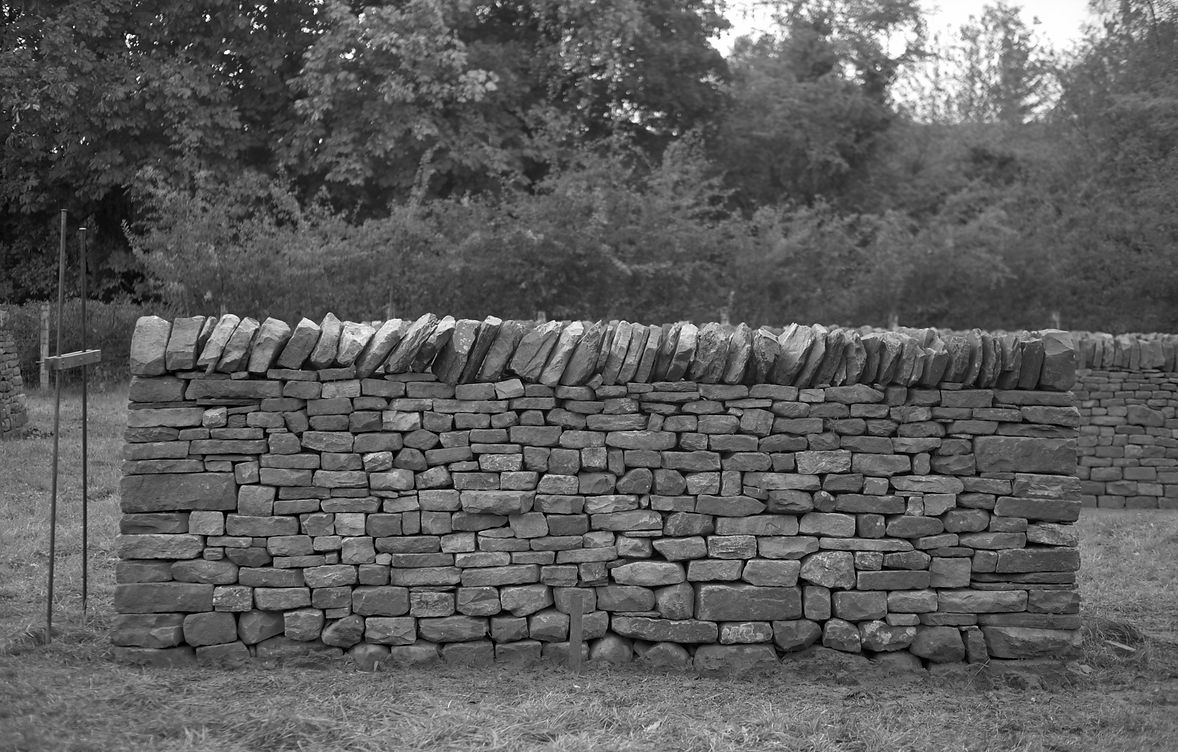Dry Stone Walling Certification
Date: 2023-2024
Material: Limestone
Location: Milnthorpe, Cumbria, UK
Program: Level 1&2 Certification in Dry Stone Walling
Organization: Dry Stone Walling Association (DSWA)
Although more of a process, than a project, this set of images captures the work Laura has completed in order to become a certified dry stone waller through the Dry Stone Walling Association (DSWA). The courses provided a rigorous framework for Laura’s technical construction knowledge in dry stone walling. Expert dry stone builders taught and trained the group of individuals for future professional work. The training included digging foundations, building structurally sound walls, creating cheek ends, and laying a row of coping stones for the last course. After training for a whole week for each certification, a group of experts assessed the quality of the construction of a day’s work, which included the dismantling and re-building of a dry stone wall.
Through the forces of gravity, density (weight), and friction, the stones start to form a robust wall when stacked with care. Small tricks, such as supporting the irregular stones with small wedges from the back, making sure the stones are lying "restfully," carefully placing infill that does not budge, crossing joints with every course, laying through stones every so often to tie the two faces together, building with a batter (sloping walls), among others, eventually result in a strong wall. When built with care, not a single stone should be shifting when touched and it should be impossible to remove stones from the wall. This is due to the weight and multiple points of contact from stones above. The wall should also not budge when the weight of an individual leans against it with full force.
Dry stone walling was once a construction technique for architectural dwellings. By separating the internal timber structure from the walls, creating robust corners with larger quoins, building on solid ground and non-earthquake prone zone, creating a flat coping, and utilising other techniques, one can create robust structures without the use of mortar. Precedents in the Italian Alps and the Scottish Highlands among others, exemplify dry stone construction as a form of shelter. Laura aims to employ these construction techniques and build dry stone architecture from immediate resources.

Working on a Dry Stone Wall for the Dry Stone Walling Association Construction Certification (Photo Credit: Timothée Ryan)

Stones for Construction (Photo Credit: Laura Stargala)

Laying Foundation Stones (Photo Credit: Laura Stargala)

Plan, Elevations and Sections of a Typical Dry Stone Wall (Drawing Credit: Laura Stargala and Timothée Ryan)
The training included digging foundations, building structurally sound walls, creating cheek ends, and laying a row of coping stones for the last course.

Construction of Wall with Through Stones (Photo Credit: Laura Stargala)

Sheep Grazing Among Dry Stone Walls on Training Site (Photo Credit: Laura Stargala)

Dry Stone Wall Built for the DSWA Training (Photo Credit: Laura Stargala)

Dry Stone Wall with Cheek Ends (Photo Credit: Laura Stargala)
